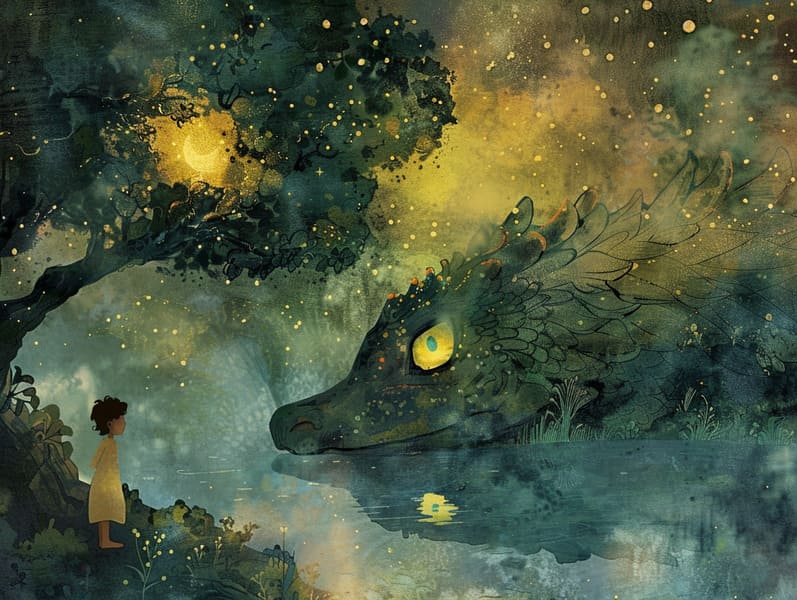The Birth of Vintage Fairy Tales and Its Immortal Delight.
The Birth of Vintage Fairy Tales and Its Immortal Delight.
Blog Article

Popular fairy tales have deep roots. These stories have been passed down from one generation to the next well before they were ever inscribed. They came from a variety of traditions, including Western traditions. They were initially passed along among mature audiences, often carrying themes and messages related to the societal norms and beliefs of the time.
The Brothers Grimm, Jacob and Wilhelm (the Grimm brothers), were among the first to compile many of these beloved stories. Their published works, "Grimm's Fairy Stories," included narratives like "Cinder Maid," "Little Brother and Little Sister," and "Snow White," which have since become hallmarks in the world of iconic fairy tales. Similarly, Hans Andersen's enchanting stories, such as "The Sea Maid," and "The Duckling that Could," have stolen hearts worldwide, establishing their place in the pantheon of beloved fairy tales.
Despite their age, traditional fairy tales remain as significant as ever, especially as nighttime stories for kids. These charming stories are now available in many formats, including gorgeously illustrated books, delightful animations, and online storybooks.
Their lasting presence can be attributed to several enchanting factors:
Moral Lessons: Timeless fairy tales often whisper important moral lessons. Narratives like "The Boy Who Cried Wolf" teach the merit of truth, while "The Race of the Tortoise and the Hare" show the benefits of perseverance and unassuming nature. These narratives offer kids clear distinctions between truth and falsehood, building their moral compass in a gentle yet lasting way.
Empathy and Understanding: Old fairy tales frequently involve heroes facing challenges and struggles, fostering listeners to relate with their struggles and encourage their triumphs. For instance, "Beauty and the Beast" emphasizes the value of looking beyond appearances to see the inner being of a being, building compassion and recognition.
Cultural Understanding: Many ancient fairy tales are interwoven with the cultural contexts from which they sprang. Engaging with these tales can provide illuminating insights into different historical contexts, nurturing a sense of global awareness and understanding.
Imagination and Innovation: The magical elements in old fairy tales—magical kingdoms—spark children’s innovative ideas. These stories move readers to magical realms, fostering creative ideas and a sense of magic that stays a lifetime.
Timeless fairy tales are not only whimsical but also pedagogical. They provide bewitching tools in enhancing various brain and heart skills in young ones. When traditional fairy tales are narrated, they foster communication skills by introducing new terms and detailed sentence structures. This practice also cultivates listening abilities and mental focus, as young ones keep up with the story, anticipating to see what happens next.
Furthermore, debating the themes and characters of ancient fairy tales can sharpen problem-solving abilities and problem-solving abilities. Young ones are led to see patterns, predict happenings, and understand cause and effect. These analyses also contribute to kids voice their thoughts and feelings, nurturing their emotional intelligence.
In today’s information age, the availability of online fairy tales has made these stories more attainable than ever. Web platforms and web apps feature broad selections of ancient fairy tales that can be accessed or listened via anytime, anywhere. Fairy tales told out loud are particularly prevalent, sharing an charming way for young ones to delight in these delightful tales. Spoken stories and spoken videos take characters and settings to life, often joined by bewitching audio effects and musical scores that intensify the storytelling experience.
The persistent attraction of classic fairy tales lies in their ability to adjust to the present while retaining their central values. Contemporary reinterpretations of these stories often show more here inclusive protagonists and modern settings, making them relatable to today’s audience. However, the key lessons of fearlessness, benevolence, and lawfulness remain unchanged, continuing to resonate with listeners of all ages.
Old fairy tales also offer a sense of reassurance and knowability. They put out a orderly narrative with a distinct beginning, middle, and end, often ending with the ending of conflicts and the triumph of good over evil. This steadiness can be relieving for young readers, granting a sense of unwaveringness in an fluctuating world.
Timeless fairy tales continue to mesmerize and educate new generations, maintaining their grace and impact in modern society. As bedtime stories for kids, they make available a perfect blend of fascination and comprehension, sustaining moral values, empathy, and creativity. The prevalence of internet fairy tales and the sought after status of fairy tales recited warrant that these classic fairy tales remain obtainable to new generations.
By guarding and sharing these narratives, we continue to appreciate the rich tapestry of cultural legacy and cultural heritage. Whether you are perusing a artistically illustrated book, exploring a internet collection, or listening through an read-aloud book, the spell of Grimm's fairy tales is always within reach. These fairy tales reveal of the everlasting magic of storytelling and its ability to tie us across centuries and lands.
Whether you are exploring a vividly illustrated book, perusing a virtual library, or listening through an read-aloud story, the loveliness of popular fairy tales is always within reach.
These fairy tales convey of the unending impact of stories and its ability to unify us across time and space, casting a charm that delights and instructs alike.